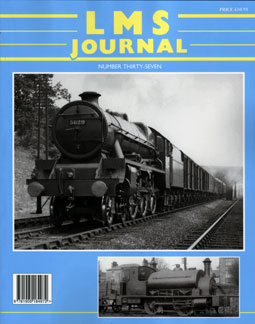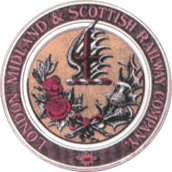LMS JOURNAL
Issues
LMSJ Issue 37
ISBN 978 1 905184 97 2
Contents
|

|
EDITORIAL
We begin this summer edition of LMS Journal with an article from Keith Miles, one of the retired railwaymen whose contributions are most valuable. In this article he describes how one of the LMS 'named trains' was worked between London and Scotland, the appropriately named Thames-Clyde express. Recently, reader Leonard Bunn submitted a picture taken at Wembley, which is most interesting and I am most grateful to him and indeed all readers who submit material for possible use in the Journal. Nelson Twells' article about the development of the Karrier Road-Rail bus follows, Although there was a lot of publicity generated about this imaginative project, it was not a success as far as the LMS was concerned. Another retired railwayman's contribution follows; Martin Welch has written the second part of the Mining and Railways article and has used his personal experience to describe what happened when subsidence occurred. With the virtual end of mining in the UK, this problem has largely ceased, but his warning to modern-day railway engineers to be mindful about hidden hazards should be noted.
Hints for Signalmen is a rather different article about signalling that is the work of regular contributor Graham Warburton and Reg Instone. As someone who was on the footplate for a few years, it brought back memories about how the LMS Railway was operated and I have added an Editor's postscript to describe some of what happened at Landor Street junction signal box, and in particular the change of drivers, firemen and guards of many up freight trains. Keith Miles' second article in this edition is entitled 'The Paper Trail' and helps readers to understand how the LMS was run in the days before computers, emails, mobile phones, etc, which today are taken for granted. I was tempted to change the title of the article and call it 'The Paper Mountain'. The volume and variety of documents was enormous; those included in this article are just the tip of the iceberg and help to explain the large number of clerks that were employed by the company. The final major article is by Keith Turton who returns to the subject of coal traffic in the Birmingham area, beginning with an historical overview. It is articles of this type that record the days when heavy industry was a major feature of the British economy and when Birmingham was sometimes known as the 'City of 1,000 trades'. ln this article we have made reference to the three books that feature D. J. Norton's pictures, entitled Railways in the West Midlands, which present views of the area that are very different to the present-day scene and they are recommended to readers whose interest is 'industrial area railways' rather than rural branch lines.
Bob Essery
Site contents Copyright © Cygnet Magazines Limited, 2014-2025.




